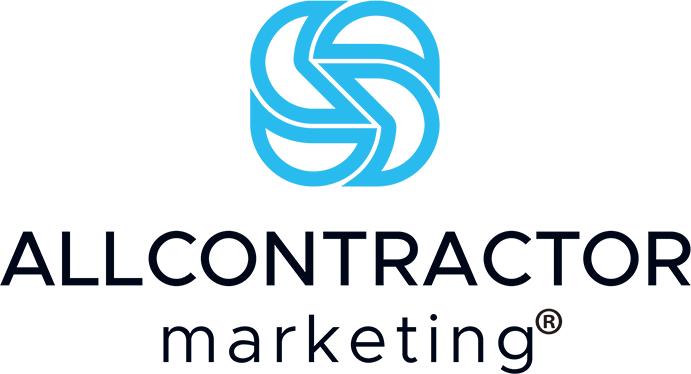Navigating Seasonal Marketing Challenges in the HVAC Industry
In the HVAC industry, the transition from warm conditions to freezing winter temperatures usually leads to a decline in service inquiries and installation requests. It’s just part of running an HVAC business. Chances are, the phone’s going to ring when it’s hot or cold, but not much in between.
Even though you’re booking fewer appointments in the shifting seasons, you shouldn’t kick back and wait for the tides to turn. Instead, it’s time to turn proactive- and that means seizing the opportunities that off-season brings to the table.
Good marketing never sleeps. A calculated shoulder-season marketing strategy can help you book more appointments in the fall and spring. Plus, it will put you way ahead of the competition when peak season rolls around.
Ready to turn the heat up on your seasonal marketing strategy? Here’s how you can book appointments and keep revenue flowing throughout the year.
Understanding Seasonal Trends
First, let’s talk about what goes on in the HVAC industry by season.
1. Peak Season
When the mercury rises or plummets, the demand for HVAC services follows suit. Identifying peak seasons is essential for businesses looking to capitalize on heightened customer needs.
If you live in a region with scorching summers or frigid winters, expect to see a substantial influx of calls. Heatwaves or cold snaps can lead to sudden breakdowns, prompting homeowners to seek emergency services. Once you understand these patterns, you’ll be better equipped to gear up for the inevitable uptick of service requests.
2. Off-Peak Seasons
As the seasons transition to milder temperatures, the HVAC industry faces a different set of challenges. The reduced demand for heating and cooling services can pose difficulties for businesses aiming to maintain a steady customer base.
Rather than waiting for clients to reach out with urgent issues, consider taking a more proactive approach. For example, you can offer seasonal maintenance programs or discounts on system upgrades during quieter times to keep the customer pipeline flowing.
Likewise, providing informative content on the importance of HVAC system maintenance and energy efficiency can engage customers even when they’re not actively seeking services. Blogs, newsletters, or social media posts can serve as gentle reminders, positioning your business as a reliable source of information.
Challenges in Seasonal Marketing in the HVAC Industry
The U.S. HVAC systems market size was valued at $17.15 billion in 2022 and is projected to grow at a rate of 6.5% between 2022 and 2030.
Despite the statistics, the HVAC industry sees a ton of ebb and flow. Here are three core challenges that shape the landscape for seasonal marketing campaigns.
Demand Peaks and Valleys
One of the primary challenges faced by HVAC businesses is the rollercoaster of demand that comes with changing seasons. While summers and winters bring a surge of service requests, off-peak seasons witness a stiff dip in demand. It can be hard to manage cash flow and workforce during these swings.
Budgetary Constraints During Off-Season
Off-peak seasons often coincide with tighter budgets for consumers. Homeowners may be less inclined to invest in new HVAC systems or undergo extensive repairs when the weather is mild.
With a reduced flow of service requests, businesses may face financial strain, making it essential to find cost-effective ways to stay afloat.
While it may be tempting to cut back on marketing during off-seasons, strategic investments can pay off. Targeted digital marketing campaigns, promotions, and loyalty programs can help maintain brand visibility and attract customers even during slower periods.
Adapting to Rapid Weather Changes
Weather in the HVAC industry is a challenge for businesses trying to anticipate and respond to sudden temperature fluctuations. Unpredictable weather patterns, extreme temperature fluctuations, and sudden storms can impact service delivery and customer satisfaction.
Developing comprehensive emergency preparedness plans ensures that HVAC businesses can respond swiftly to weather-related crises. This includes having a protocol for handling an influx of service requests during extreme weather events and ensuring that staff are adequately trained to address urgent situations.
Strategic Approaches
Now that we’re aware of the seasonal problems facing the HVAC industry, let’s dive into three key strategic approaches that can empower you to weather these variations and thrive in an ever-changing market.
Targeted Seasonal Campaigns
Crafting targeted seasonal marketing campaigns is a powerful way for HVAC businesses to connect with customers at the right time.
When companies understand the specific needs that arise with each season, they can tailor their marketing messages effectively.
Develop marketing materials that resonate with the unique seasonal challenges customers face. Whether it’s promoting air conditioning services during scorching summers or emphasizing heating solutions during winter chill, personalized messaging enhances relevance and engagement.
Anticipate peak seasons and initiate marketing efforts ahead of time to capture the attention of customers preparing for extreme weather conditions. This strategic timing can position your business as a proactive and reliable partner.
Maintenance and Subscription Programs
Introduce comprehensive maintenance plans that cover regular checks, system cleanings, and priority service. Promoting these plans as a year-round necessity helps maintain a consistent revenue flow. Plus, customers appreciate the peace of mind that comes with proactive maintenance.
Furthermore, explore subscription-based models for HVAC services. Customers pay a regular fee for ongoing access to services, creating a predictable income stream for the business. Besides ensuring constant revenue, this approach also encourages customer loyalty.
Diversification of Services
Given the growing focus on sustainability, you might want to add energy audits and efficiency upgrades to your service portfolio. Market the business as a solution for clients looking to reduce their carbon footprint.
You can also embrace the trend of smart homes by offering HVAC solutions that integrate seamlessly with smart technology. From programmable thermostats to interconnected heating and cooling systems, these smart HVAC solutions can cater to the evolving needs of modern customers.
Digital Marketing Tactics
With an increasing number of people searching for services online, it only makes sense for HVAC businesses to jump on the digital marketing bandwagon. Here’s how.
Social Media Engagement
Social media platforms let HVAC companies connect with existing and potential customers. In this regard, social media engagement goes beyond occasional posts- it involves building a reputable online presence and fostering meaningful connections.
Share a mix of content, including informative articles, how-to guides, and seasonal tips on your social media. Diversified content keeps your audience engaged and establishes your business as an authority in the HVAC space.
Also, actively engage with the audience through comments, messages, and polls. Consider running seasonal contests or giveaways to boost interaction.
SEO Optimization
Search Engine Optimization (SEO) is a cornerstone of digital marketing that directly influences how businesses appear in online search results. It’s your ticket to making sure your company is easily discoverable by clients seeking your services.
Because HVAC services are location-specific, prioritize local SEO. Check if your business information, name, address, and phone number are consistent across all platforms.
Identify relevant keywords related to your HVAC services and incorporate them naturally into website content. This enhances the website’s visibility when potential customers search for specific services or solutions.
Finally, update your website with high-quality, educational content regularly. Blog posts, service pages, and FAQs contribute to a robust online presence and positively impact search rankings.
Email Marketing Campaigns
Use email campaigns to announce seasonal promotions, discounts, or special offers. Timely emails can prompt customers to schedule maintenance services before extreme weather hits, maximizing business during peak seasons.
You can also send out informative newsletters that educate customers about HVAC system maintenance, energy efficiency tips, and industry trends. Position the business as a valuable source of knowledge to foster trust and loyalty.
Customer Retention Strategies
Acquiring new clients is one thing, but keeping them is a different ball game. We’ve shared two essential customer retention strategies to keep your clients happy and invested in your brand.
Loyalty Programs
Loyalty programs are a tried-and-true method to incentivize repeat business and reward customers for their continued trust. Implement points-based loyalty programs where customers can earn points for each service or purchase. They can redeem the accumulated points for discounts, free services, or exclusive perks.
Encourage existing customers to refer friends, family, or colleagues by incorporating referral rewards into the loyalty program. This not only expands the customer base but also enhances the sense of community around your brand.
Educational Content
Educational content serves as a valuable retention tool by establishing your company as an authority in the industry. Regularly publish blog posts and articles on your website covering topics such as maintenance tips, energy efficiency, and seasonal HVAC considerations.
Create how-to guides and tutorials in various formats, including videos and infographics. Finally, utilize email newsletters to share educational content directly with your customer base.
Measurement and Adaptation
It’s not enough to just implement a seasonal marketing strategy for your HVAC business. You also need to measure results and alter the process as you go.
Analytics and Metrics
Regularly analyze website traffic, user behavior, and conversion rates. Identify popular pages, assess the effectiveness of calls-to-action, and use this data to enhance the user experience and drive desired actions.
Implement customer satisfaction surveys to gather feedback on services, responsiveness, and overall experience. Analyzing survey results provides valuable insights into areas for improvement and highlights strengths that can be leveraged in marketing efforts.
Flexibility in Planning
Stay attuned to real-time data and market trends. If certain marketing channels or strategies prove more successful than anticipated, be ready to reallocate resources to capitalize on those opportunities.
Adopt an agile approach to marketing by breaking down long-term plans into shorter, more flexible cycles. This enables businesses to adjust strategies based on evolving customer needs, industry trends, and competitive landscapes.
Additionally, anticipate potential challenges and devise contingency plans. Having predefined response plans allows for a more composed and effective reaction.
The Bottom Line
You need more than technical expertise to thrive in the HVAC industry. Hopefully, this post has given you some insight into how to navigate seasonal challenges to keep your business running as usual. Get ready to turn obstacles into opportunities!
Stressed about promoting your HVAC company? Let All Contractor Marketing® take care of your seasonal campaigns! Contact us today to embark on a journey of growth, visibility, and unparalleled success, no matter the weather outside.




